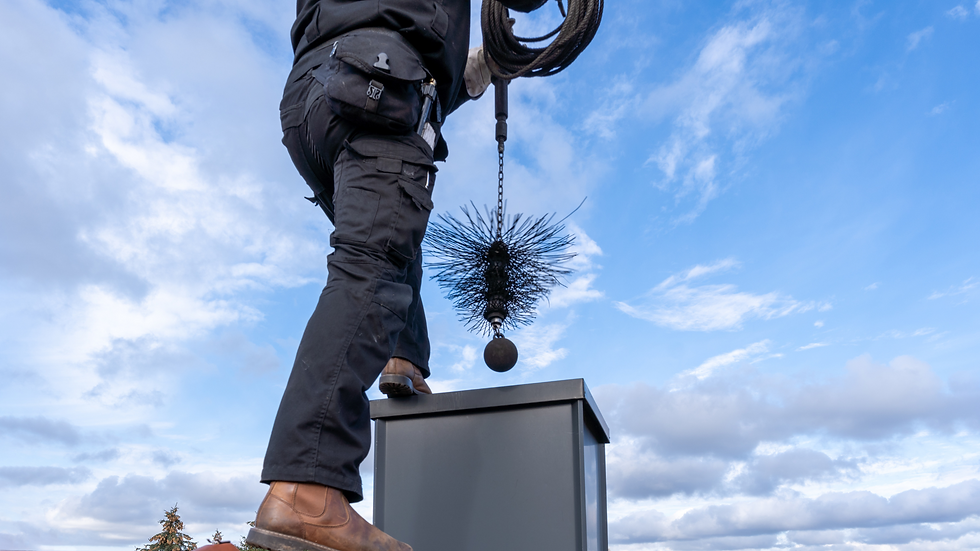Preparing Your Wood Burning Stove For Winter
- Gemma Alexander

- Oct 12, 2023
- 2 min read

Preparing your wood-burning stove for winter is essential to ensure that it operates efficiently, safely, and provides the maximum amount of warmth. Here are the steps to get your wood-burning stove ready for the cold season:
Clean the Stove:
Start by thoroughly cleaning the stove, including the interior and exterior. Remove any ash and creosote buildup. You can use a shop vacuum, a brush, and a scraper to clean the inside and a damp cloth for the exterior.
Check for Damage:
Inspect the stove for any signs of wear and tear, such as cracked glass, damaged gaskets, or rust. Replace any damaged components to maintain safety and efficiency.
Check the Chimney and Flue:
Make sure your chimney and flue are clean and free from obstructions. If necessary, have them professionally cleaned by ICS Chimney Solutions. Ensure the damper is functioning properly.
Stock Up on Wood:
Gather a sufficient supply of well-seasoned firewood. It's best to use hardwoods like oak, maple, or hickory, as they burn more efficiently and produce less creosote. Wood should be properly seasoned (dried for at least six months) to reduce moisture content.
Create a Safe Wood Storage Area:
Store firewood in a dry, well-ventilated area away from the house to prevent pests and moisture. Make sure it's easily accessible for restocking the stove.
Inspect and Replace Seals and Gaskets:
Check the seals and gaskets around the stove door and other access points for signs of wear or damage. Replace them if needed to maintain a proper seal, ensuring efficient combustion and preventing air leaks.
Install Carbon Monoxide and Smoke Detectors:
Ensure you have carbon monoxide detectors and smoke alarms installed near your wood-burning stove to alert you in case of any issues.
Ensure Proper Ventilation:
Make sure your home has adequate ventilation to provide a constant supply of fresh air to the stove. This prevents the buildup of smoke, maintains a good draft, and minimizes the risk of carbon monoxide leaks.
Check Draft and Damper Settings:
Verify that the draft and damper settings are working correctly. Adjust them as needed to control the airflow and temperature inside the stove.
Learn Safe Burning Practices:
Familiarize yourself with safe wood-burning practices, including how to build and maintain a fire. Avoid overloading the stove, and always use a fire screen or glass door to contain sparks.
Schedule Professional Inspection:
Consider having a professional chimney sweep from ICS Chimney Solutions and stove technician inspect your stove and chimney annually to ensure everything is in good working order.
Maintain Safety Clearances:
Make sure your wood-burning stove is placed a safe distance from walls, flammable materials, and any potential hazards. Follow manufacturer guidelines for clearances.
Gather Necessary Tools:
Keep tools such as a poker, tongs, and a shovel nearby for managing the fire.
By following these steps, you'll ensure that your wood-burning stove is ready for winter, providing a safe and efficient source of heat for your home. Remember to always follow safety guidelines and local regulations when using a wood-burning stove.





Comments